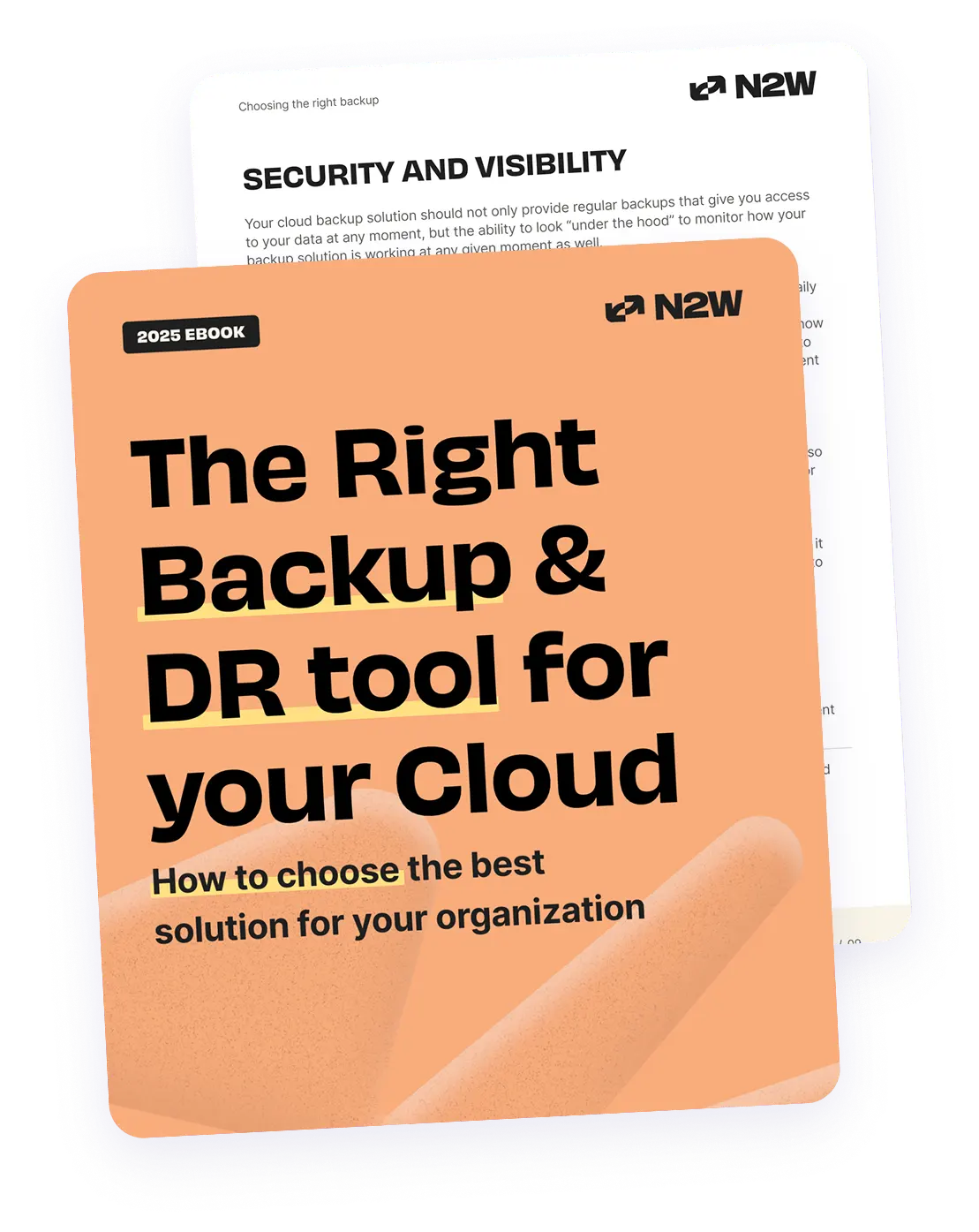What Is Database Backup?
Database backup involves creating a copy of data in a database to protect against data loss. This process enables the recovery of data following an event where the original data may be lost or corrupted. Regular backups ensure that data can be restored to a specific point in time and provide protection against hardware failures, data corruption, or cyber-attacks.
A well-implemented backup strategy is crucial for maintaining data integrity and business continuity in IT environments. Database backups can take various forms, such as full, incremental, or differential backups. These backups can be stored on different media, including cloud storage, local drives, or external devices.
Consistent backups are essential for minimizing downtime and ensuring that organizations can continue operations without significant data loss. The methodology and frequency of backups should align with business priorities and the criticality of the data involved.
This is part of an extensive series of guides about cloud security.
In this article:
- Why Is Database Backup Important?
- Common Use Cases for Database Backup
- Types of Database Backups
- Methods of Database Backups
- How Backups Work in Common Database Systems (SQL and NoSQL)
- Challenges of Database Backup
- Special Challenges in Highly Distributed Environments
- Best Practices for Effective Database Backups
- Database Backup in the Cloud with N2W
Why Is Database Backup Important?
Database backup provides a safeguard against accidental data loss, data corruption, and unforeseen disasters, ensuring the continuity of business operations. With databases often storing vital information, a backup plan minimizes risks by enabling data recovery, which is crucial for maintaining data availability and integrity.
Backups help avoid severe operational disruptions and costly data recreation efforts. Regulatory requirements often mandate data protection measures, including regular backups for compliance purposes. In some industries, organizations need to adhere to data protection laws, making database backups a legal or commercial necessity.
Common Use Cases for Database Backup
Point-in-Time Recovery (PITR)
Point-in-time recovery (PITR) restores a database to a state at a particular time, making it useful for recovering from data corruption or accidental data alterations. By using regular backups and transaction logs, PITR allows administrators to rewind the database to a pre-error state, thus preserving the integrity of the data.
Implementing PITR requires a structured backup strategy that involves continuous log backups in addition to regular database backups. This process ensures any transactions executed between full backups can also be restored.
Disaster Recovery
Disaster recovery involves restoring data following catastrophic events like hardware failures, cyber-attacks, or natural disasters. A backup strategy provides a safety net to restore systems and resume operations quickly. This process often involves redundant backup systems and offsite storage to ensure data availability even when the primary data center is compromised.
A disaster recovery plan includes regular testing and validation of backups to ensure they can be reliably used in crisis situations. By aligning backups with recovery objectives, such as recovery time objectives (RTO) and recovery point objectives (RPO), organizations can minimize downtime and data loss during recovery processes.
Learn more in our detailed guide to AWS disaster recovery
Database Migration
Database migration involves transferring data from one system to another, often required during upgrades, cloud transitions, or data consolidation efforts. It ensures that data is preserved in its original form before any transformation or transfer processes, allowing for rollback if necessary.
Database backups support smooth transitions by providing a reliable state of the database to revert to if needed. They also serve to verify the integrity and completeness of data post-migration, ensuring the new system accurately reflects the intended dataset.
Archival and Compliance
Backups are crucial for data archiving and ensuring compliance with industry regulations regarding data retention and protection. Regular backups allow organizations to store data long-term, which is vital for meeting legal, financial, or policy obligations. Archiving strategies leverage backups to organize, protect, and preserve historical data.
Archival needs often dictate the retention periods and storage solutions organizations adopt, balancing between cost-effectiveness and compliance. By maintaining proper archival backups, organizations can support regulatory audits, demonstrate adherence to data laws, and ensure older data is retrievable when required.
- Tiered storage approach: Keep recent backups on fast storage (like SSDs) for quick restores and older backups on cheaper, slower storage (like cloud cold storage). This balances performance and cost.
- Fine-tuned backup window scheduling: Use advanced monitoring tools to analyze system load and user traffic patterns. Schedule backups during the least busy periods to minimize impact on performance, especially in 24/7 operations.
- Use backup chaining: Implement "backup chaining" where a series of incremental backups are periodically merged with full backups. This reduces restore complexity and improves the efficiency of incremental backup processes.
- Cross-database integrity checks: When dealing with multiple databases that interact (e.g., microservices architectures), periodically check the integrity of backups across systems to ensure consistency between dependent databases during restores.
- Backup metadata: Always backup the database schema and configuration details, especially in complex environments. If the backup lacks critical metadata, restoring to a fully functional state can become time-consuming or incomplete.
Types of Database Backups
Physical vs Logical Database Backup
Physical backups involve copying the physical files that store the database’s data, such as data files, log files, and configuration files. This type of backup is often used for larger, complex databases, as it includes everything needed to reconstruct the database from scratch. Physical backups are typically faster to perform and restore, especially for large datasets.
Logical backups capture the logical data within the database, such as tables, indexes, and stored procedures, often in the form of SQL statements. Logical backups are more flexible and portable than physical backups, as they can be used to restore the data to different database systems or versions. However, they can take longer to execute and may require more time to restore, especially for larger databases. Also logical backups can lose some database-specific metadata or constraints, which might limit portability in certain cases (e.g., schema differences).
SQL vs NoSQL Database Backup
SQL database backups typically rely on established methods such as full, incremental, and differential backups. SQL databases are structured, often following the relational model, which organizes data into tables with strict schemas. Backup processes for SQL databases often integrate with transaction logs to enable point-in-time recovery, ensuring data integrity in case of crashes or corruption. Tools and utilities provided by database management systems (DBMS) like MySQL, PostgreSQL, and SQL Server streamline backup and recovery operations in SQL environments.
NoSQL databases, such as MongoDB, Cassandra, or DynamoDB, use a more varied approach to backups. NoSQL databases often have flexible, schema-less designs and may store data in document, key-value, or graph formats. Due to these structural differences, backup solutions for NoSQL databases can vary widely. Some NoSQL databases offer built-in backup utilities, while others may require custom scripts or third-party tools. Additionally, because NoSQL systems are designed for scalability, they frequently implement backup strategies that support distributed environments, like creating snapshots or replicating data across multiple nodes.
Methods of Database Backups
Full Database Backups
Full database backups capture the entire database at a given point, ensuring all data can be restored in case of loss. These backups enable a complete restoration of the system’s state without needing additional data sources. Full backups are typically scheduled less frequently due to their storage demands and processing time.
Incremental Database Backup
Incremental database backups record data changes made since the last backup, whether full or incremental. This method requires less time and storage since only the modified data is copied. Incremental backups help optimize resources, as they require less storage space and bandwidth compared to full backups.
Differential Database Backup
Differential database backups record changes made since the last full backup. Unlike incremental backups that track changes from the last backup of any type, differential backups only accumulate changes following the last full backup. This approach simplifies the restoration process by only requiring the last full backup and the most recent differential backup.
How Backups Work in Common Database Systems (SQL and NoSQL)
Oracle Database Backup

Database type: SQL
License: Commercial
Oracle offers multiple backup options through its recovery manager (RMAN) tool, which provides a solution for both physical and logical backups. RMAN allows for full, incremental, and differential backups, integrating with Oracle’s features like block-level recovery. Oracle backups can be performed while the database is online (hot backup) or offline (cold backup).
RMAN supports automated scheduling and retention policies, ensuring backup consistency and optimizing storage through deduplication and compression. Additionally, Oracle offers backup integration with cloud storage services such as Oracle Cloud or Amazon S3, enabling offsite storage for disaster recovery purposes.
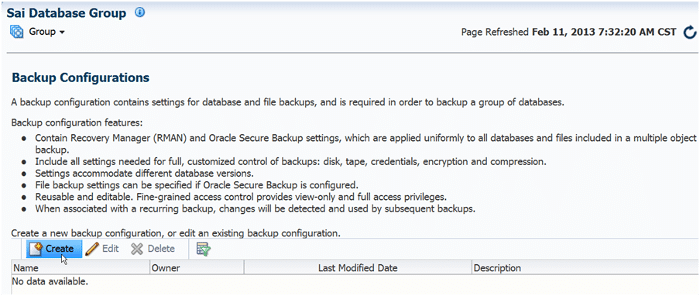
MySQL Backup

Database type: SQL
License: Open source
MySQL provides several backup options, including mysqldump for logical backups and mysqlpump for parallelized backups. These tools export data in a format that can be restored into another MySQL instance. Physical backups can be performed using Percona XtraBackup or MySQL Enterprise Backup, both of which enable hot backups for InnoDB tables without locking the database.
MySQL backups are configurable and can be automated through scripts or backup solutions. For large datasets, incremental backups and point-in-time recovery (PITR) are supported, especially when using binary log files.
Learn more in our detailed guide to MySQL backup automation
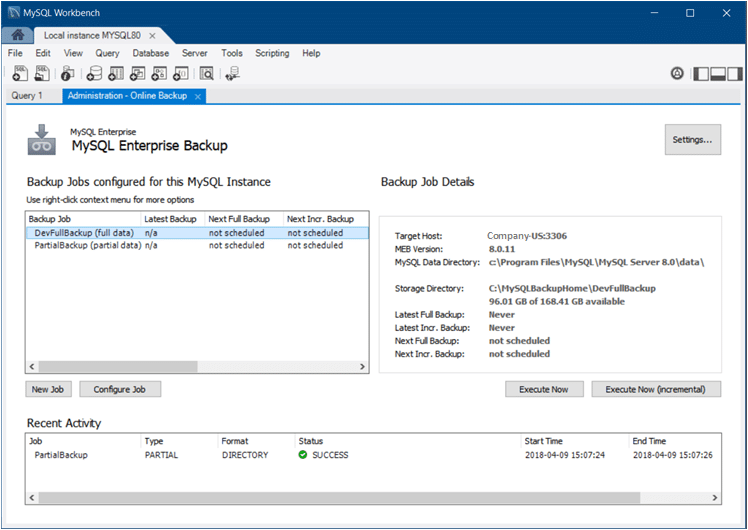
MSSQL Backup

Database type: SQL
License: Commercial
Microsoft SQL Server (MSSQL) provides backup features, including full, differential, and transaction log backups, through its native tools like SQL Server Management Studio (SSMS) and Transact-SQL commands. MSSQL supports both manual and scheduled backups, enabling organizations to automate the process and ensure consistency.
The integration of Always On Availability Groups supports high availability by synchronizing backups across multiple replicas. Additionally, MSSQL offers the ability to store backups in Azure Blob Storage, providing a scalable, cloud-based option for offsite storage and disaster recovery.
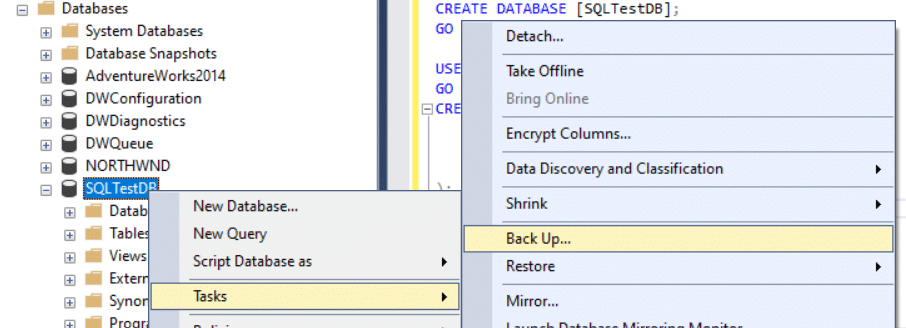
MongoDB Backup

Database type: NoSQL
License: Open source
MongoDB offers flexible backup options, including physical and logical backups. Physical backups are typically done using file system snapshots, while logical backups can be performed with the mongodump tool, which exports data in a BSON format that can be restored using mongorestore.
MongoDB also supports cloud-native backup services through MongoDB Atlas, which provides fully managed, on-demand, and continuous backups. Atlas backups enable PITR for sharded and replica set clusters, giving users the ability to restore data to a specific moment in time. These backups are scalable and integrated with automated scheduling and retention policies.
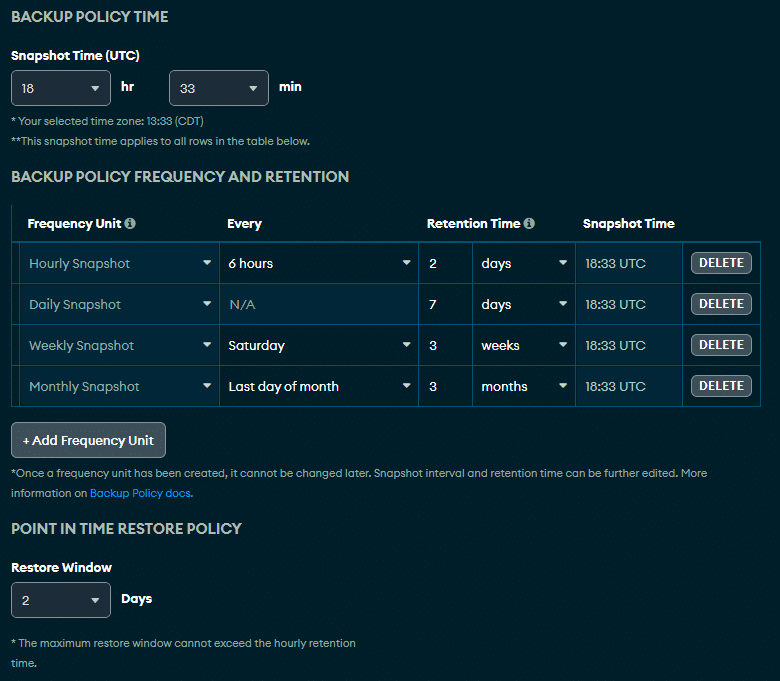
Apache Cassandra Backup

Database type: NoSQL
License: Commercial
Apache Cassandra supports several backup methods, primarily focused on snapshot-based backups. Cassandra’s nodetool snapshot command captures a consistent snapshot of SSTable files, which can be used for full backups. Since Cassandra is designed for distributed systems, these snapshots are taken at the node level, allowing for easy restoration across large clusters.
Snapshots can be stored locally or transferred to offsite storage for disaster recovery.
For more fine-grained recovery, Cassandra uses its commit log files for PITR, allowing for data restoration to a specific point in time after a failure. Incremental backups, which store only the changes made since the last snapshot, are supported to optimize storage usage and speed up recovery times in large-scale deployments.
PostgreSQL Backup
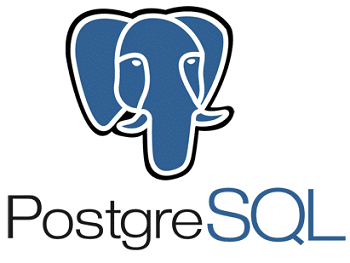
Database type: SQL
License: Open source
PostgreSQL supports both physical and logical backups using built-in tools like pg_basebackup for full physical backups and pg_dump for logical backups of tables or entire databases. Physical backups allow for PITR by using write-ahead logging (WAL) files, while logical backups offer portability across different PostgreSQL versions.
PostgreSQL’s backup methods are suitable for a range of use cases, from small deployments to large-scale systems. Backups can be automated using cron jobs or integrated into third-party tools for cloud backups.
DynamoDB Backup

Database type: NoSQL
License: Commercial (cloud service)
Amazon DynamoDB offers on-demand and continuous backups via its managed service. On-demand backups allow users to create full backups of their tables at any time, with no impact on performance. Continuous backups enable point-in-time recovery, providing the ability to restore data to any second within the last 35 days.
DynamoDB integrates with AWS services, allowing for automated backup management and lifecycle policies to optimize costs. These cloud-native backups provide a scalable solution, ensuring data durability and rapid recovery from accidental deletions or corruption.
Related content: read our guide to DynamoDB backup

SAP HANA Backup

Database type: SQL
License: Commercial
SAP HANA provides several backup options, including full, incremental, and differential backups, via its inbuilt management tools. Backup strategies in SAP HANA are often tailored to support high-performance in-memory databases, ensuring minimal downtime during backup operations.
HANA supports both traditional on-premises backups and cloud-based solutions, integrating with SAP HANA Cloud or third-party storage services. Its snapshot-based approach and log backup features ensure point-in-time recovery.
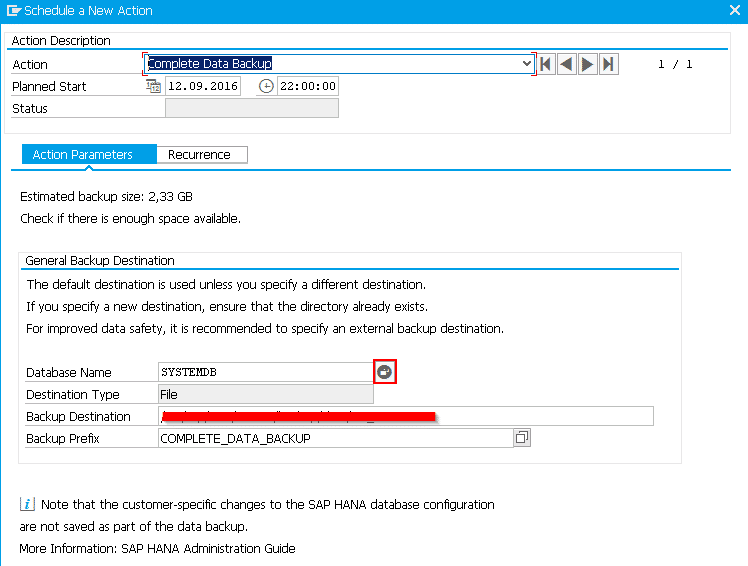
Challenges of Database Backup
There are several key challenges associated with backing up databases.
Backup Window and Performance Impact
The backup window and performance impact present challenges in database backup strategies. Achieving reliable backups without significantly disrupting operational workloads requires careful planning and execution. This challenge becomes more acute in large databases where the backup process can extend over long periods and consume substantial system resources.
Storage Requirements
Storage requirements pose a significant challenge in managing database backups, particularly for organizations with large-scale databases or substantial data growth. Storing full and frequent backups rapidly consumes storage resources, necessitating efficient management strategies to control costs while maintaining data protection capabilities.
✅ Pro Tip: N2W optimizes storage by automatically archiving snapshots to cost-efficient storage tiers like AWS S3 Glacier
Recovery Time Objectives (RTO)
Recovery time objectives (RTO) define the acceptable downtime duration following a data loss event. Achieving RTO goals can be challenging, especially for critical systems requiring rapid recovery. The backup strategy must be aligned with RTO expectations, ensuring that restoration procedures are efficient and tested.
Data Growth and Scaling
As organizations accumulate more data, ensuring timely and efficient backups becomes increasingly complex. This growth demands constant evaluation and adaptation of backup architectures to ensure data remains protected and recoverable without affecting the performance of existing systems.
Special Challenges in Highly Distributed Environments
Here are some of the challenges associated with database backups in distributed systems, for example in the cloud or when operating NoSQL database clusters.
Scaling Backups
In highly distributed environments, scaling backups is a challenge due to the large number of nodes and the decentralized nature of data storage. Each node in a distributed system stores a portion of the total data, and backup strategies must account for this distribution to ensure data protection. Coordinating backups across multiple nodes without overloading the network or consuming excessive resources is complex, especially as the system scales.
Backup Frequency
Frequent backups ensure minimal data loss in the event of a failure, but they can place a heavy burden on system performance and storage. This challenge is exacerbated in distributed systems where multiple nodes must coordinate to perform backups, potentially leading to network congestion and performance degradation.
Data Consistency
Maintaining data consistency across nodes during backup operations is a key challenge in distributed systems, where data is replicated or partitioned across multiple locations. Backups must capture a consistent snapshot of the entire dataset, even though data may be in different states on various nodes. Achieving consistency is particularly difficult when systems are actively processing transactions during backup windows.
✅ Pro Tip: Use N2W to create application-consistent snapshots during database migration, ensuring an accurate rollback point and simplifying transitions across AWS and Azure environments.
Best Practices for Effective Database Backups
Here are some of the ways that organizations can mitigate the challenges of maintaining database backups.
Automate Backup Procedures
Automating backup procedures helps ensure regularity, minimize errors, and reduce administrative overhead. With automation, backups occur without manual intervention, adhering to consistent schedules and policies. By leveraging scripting, backup software, and integrated tools, organizations can streamline their backup processes for enhanced reliability.
Automation also supports rapid recovery by facilitating quick and organized access to backup data when needed. Configurations can specify varied backup frequencies and types, ensuring alignment with business requirements and recovery objectives.
Regularly Test Database Backups
Regular testing of database backups validates their integrity and ensures feasibility during recovery scenarios. Testing involves simulating data restoration processes from backups, confirming that data is complete and the recovery process functions as expected. Frequent tests build confidence in backup reliability and reveal potential issues before they become critical.
Beyond technical validation, testing processes should align with disaster recovery and business continuity plans, ensuring they meet organizational recovery objectives. Incorporating automated testing further reduces manual effort and ensures consistent backup quality.
Encrypt Backups
Encrypting backups protects data from unauthorized access, ensuring confidentiality and compliance with regulatory standards. Encryption methods secure backup data at rest and in transit, protecting sensitive information from exposure during storage or transfer. Implementing encryption involves utilizing algorithms and keys to secure data.
Organizations can leverage built-in encryption features of backup software or apply external encryption tools. Managing encryption keys and ensuring their secure storage is critical to unlocking data when needed.
✅ Pro Tip: With N2W, you can easily perform DR backups of encrypted resources into a different region or account.
Implement Redundant and Offsite Backups
Redundant and offsite backups enhance data protection by diversifying storage locations, mitigating risks from localized disruptions. Keeping copies in multiple locations reduces the likelihood of complete data loss due to physical damage, theft, or natural disasters. Redundancy ensures availability, while offsite storage offers resilience against on-premises failures.
This strategy involves establishing protocols for regularly updating and synchronizing offsite backups to ensure they reflect the latest data state. Organizations may use cloud storage or secondary data centers to host offsite backups, balancing accessibility and security considerations.
✅ Pro Tip: N2W simplifies disaster recovery by automating backups and enabling cross-region failover for critical databases, ensuring rapid recovery in cloud-native environments.
Adopt a Backup Retention Policy
A backup retention policy defines how long backups are kept, balancing data availability with storage costs and compliance needs. Effective policies establish retention periods based on business requirements, regulatory mandates, and data modification frequency. By outlining clear rules for deleting expired backups, organizations efficiently manage storage resources.
Developing retention policies involves classifying data based on its importance, frequency of access, and legal obligations. Automating policy enforcement reduces manual errors and assures consistent adherence to guidelines.
Use Backup Compression and Deduplication
Employing backup compression and deduplication optimizes storage efficiency and cost by reducing backup file size. Compression algorithms shrink backup data volumes, minimizing storage requirements and potentially reducing network transmission times. Deduplication removes redundant copies of data, retaining only unique information for storage.
Database Backup in the Cloud with N2W
Database backups are critical to ensuring business continuity, compliance, and operational resilience. As data grows and environments become more distributed, managing backups can feel overwhelming. That’s where N2W Backup & Recovery comes in:
- Automated backups for AWS and Azure: Schedule backups across accounts, regions, and clouds with ease.
- Granular database recovery: Leverage our application-consistent snapshots and 60-second backup interval to restore databases to precise states.
- Disaster recovery automation: Enable seamless failover and cross-region replication for critical workloads.
- Cost optimization: Archive snapshots to low-cost storage like S3 Glacier or Azure automatically.
- Multi-cloud ready: Current support for AWS and Azure, with GCP on the roadmap.
Ready to enhance your backup strategy? Download our free Disaster-Proof Backup Checklist and discover actionable steps to safeguard your data against any scenario.
See Additional Guides on Key Cloud Storage Topics
Together with our content partners, we have authored in-depth guides on several other topics that can also be useful as you explore the world of cloud storage.
Immutable Backups
Authored by N2W
- [Guide] Immutable Backups: How It Works, Pros/Cons, and Best Practices
- [Guide] Immutable Snapshots: Use Cases, Challenges, and Best Practices
- [Product] N2WS | Cloud Backup and Restore
Cloud Security Solutions
Authored by NetApp
- Cloud Security Solutions Compared: 6 Solutions to Consider
- Understanding Cloud Security Challenges
- Cloud Security Architecture for IaaS, PaaS and SaaS
CNAPP-TA
Authored by Tigera
